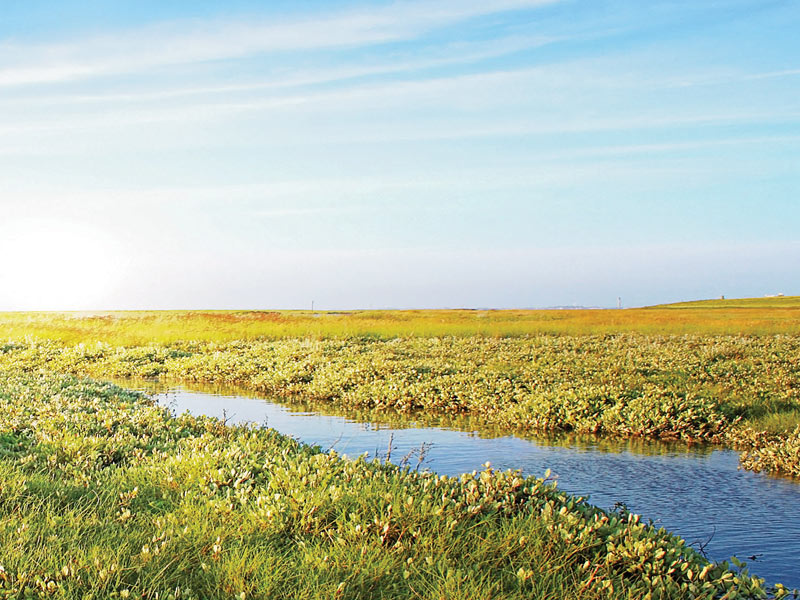As stewards of our equine land, it’s important that we do our part to protect local creeks and rivers from pollution. On horse properties, two common sources of pollution are manure and fertilizer runoff, which both contain high levels of nitrogen and phosphorus. Runoff from manure can also contain harmful bacteria and parasites. These pollutants may cause harmful algal blooms, fish kills, and in extreme cases, make our water unsafe to drink.
The Solution
The good news is that there are natural methods of reducing water pollution from our horse farms. One of the most effective is the use of well-designed and maintained riparian buffers.
Riparian buffers are vegetated areas near creeks and streams that protect water quality while providing bank stabilization and habitat for aquatic and terrestrial species. The vegetation in a riparian buffer slows down the flow of surface water, allowing sediment and other phorses to settle out before reaching the stream. Additionally, plants in the riparian buffer utilize the nutrients and water for their own growth, absorbing nitrogen and phosphorus before they enter water sources. Soil bacteria are another incredibly important component of riparian buffers; they utilize nitrogen as their energy source, removing it from the soil.
Designing Riparian Buffers
Riparian buffers should be located adjacent to any surface waters, where they can intercept the water flowing off pastures or manure piles. The flow of water must be slowed enough to allow sediments to settle out, and prevent channels from being formed. Channels will effectively act as pipes that let the water pass through the buffer without being treated.
Width is the most important variable we can control when designing a buffer. In general, the wider the better. A 50- to 100-foot buffer is great; on small acreage farms where land is limited, however, this may not always be feasible. In these cases, even some buffer is always better than none at all.
An optimal buffer design includes native trees closest to the stream bank. Their deep roots help stabilize the bank and bring carbon down to bacteria, stimulating the species that help remove nitrogen. Trees also provide long-term nitrogen storage, since they have longer lifespans than grasses. An intermediate zone can include trees and shrubs. A third zone, located closest to the pastures, should be grass, ideally at least 20 feet wide and fenced out of the pastures.
Once planted, riparian buffers need little maintenance – you simply let nature take its course.
Where to Find Help
Your local Natural Resource Conservation Service or Soil Conservation District office can help with riparian buffer guidelines and practical advice specific to your area. They can also help determine if your farm is eligible for grant funds to help offset the costs of riparian buffer restoration. As well, they can assist you about any laws regarding riparian buffers that need to be met in your particular state – such laws are becoming more prevalent.
Clay Nelson is an expert on the planning, design and management of sustainable, eco-friendly equestrian facilities through his organization Sustainable Stables, LLC – SustainableStables.com







